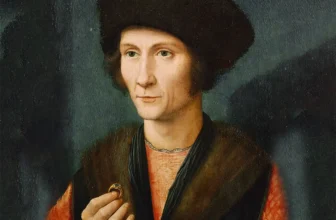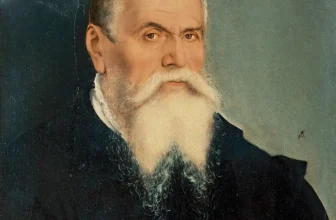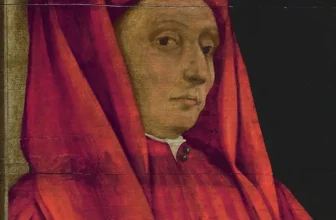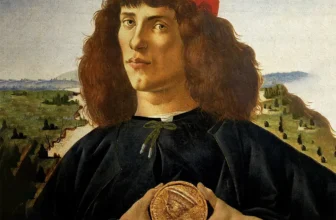The Genius of Dutch Mannerism
Hendrick Goltzius (1558–1617) stands as one of the most remarkable figures in late sixteenth-century European art. A master engraver, painter, and draftsman, Goltzius bridged the gap between the Northern Renaissance and the emerging Baroque. Known for his virtuosic linework, muscular anatomies, and intellectually charged allegories, he transformed Dutch Mannerism into a dazzling display of technical skill and emotional depth.
In an age fascinated by classical antiquity and the human body, Goltzius’ art captured the ideal of perfection through exaggerated beauty and movement. His prints were collected by scholars, aristocrats, and artists across Europe. Today, his name remains synonymous with engraving excellence and artistic bravura.
This article explores Hendrick Goltzius’ life, his most famous artworks, his stylistic innovations, and the current market value of his works , offering a comprehensive insight into one of the Dutch Golden Age’s most fascinating masters.
Early Life and Training: From Limb to Line
Born in Bracht, Germany, in 1558, Hendrick Goltzius was raised in an environment that valued craftsmanship and artistic discipline. His family moved to Duchy of Cleves and later to Haarlem, where Goltzius studied under Dirck Volckertszoon Coornhert, a philosopher and engraver who emphasized moral and intellectual themes in art.
A childhood accident left Goltzius with a deformed right hand , a condition that paradoxically heightened his artistic control. His unusual grip gave him an extraordinary ability to manipulate the engraving burin, allowing for precise, expressive, and fluid lines that became his signature.
By his twenties, Goltzius had already become one of the most technically accomplished engravers in Northern Europe. His workshop attracted apprentices and patrons, and his fame spread throughout the continent.
The Hallmarks of Hendrick Goltzius’ Style
Goltzius’ art embodies the Mannerist spirit , a movement characterized by elegance, artifice, and intellectual complexity. Unlike the harmonious naturalism of the Italian Renaissance, Mannerism sought beauty in exaggeration and tension.
1. Muscular Figures and Idealized Anatomy
Goltzius’ figures are known for their heroic physiques. Muscles are sharply defined, twisting in dynamic poses inspired by Michelangelo and Hellenistic sculpture. These forms symbolize both physical and moral strength, mirroring the Renaissance ideal of man as microcosm , the embodiment of divine order through anatomy.
2. Bold Lines and Engraving Mastery
His engravings exhibit a flawless control of line, varying in density to create light, shadow, and texture. Through intricate hatchings and curves, Goltzius could model forms with a sculptural quality unseen before. His use of “swelling line” technique, where the line thickens and thins rhythmically, gives his prints a pulsating energy.
3. Allegory and Intellect
Many of Goltzius’ works fuse classical mythology with moral allegory. He did not merely reproduce antique subjects; he reinterpreted them as philosophical meditations on virtue, passion, and knowledge. His figures often embody humanist ideals , beauty serving as a vehicle for wisdom.
4. Fusion of Italian and Northern Traditions
After his 1590 journey to Italy, Goltzius absorbed the grandeur of Titian, Raphael, and Michelangelo. Yet he combined this with Northern precision and attention to detail. The result was a hybrid style , Italian dynamism rendered with Dutch craftsmanship , that profoundly influenced future generations of Dutch artists.
Goltzius’ Most Famous Artwork: “The Farnese Hercules”
Among Hendrick Goltzius’ vast output, “The Farnese Hercules” (1592) stands as his most celebrated and influential engraving. Inspired by the ancient marble statue in Rome, the work exemplifies his mastery of anatomy and technique.
The Artwork Explained
In this print, Hercules rests after his labors, his monumental muscles coiled in repose. Every sinew, tendon, and curve of the body is rendered with almost obsessive precision. Yet beneath the display of strength lies a philosophical message , the tension between physical power and moral endurance.
Goltzius’ “Farnese Hercules” became an icon of Mannerist art, praised for its technical virtuosity and intellectual subtlety. It circulated widely across Europe, cementing Goltzius’ reputation as the Michelangelo of engraving.
Other Notable Works
While “The Farnese Hercules” remains his masterpiece, Goltzius’ oeuvre is rich and varied. Some of his other renowned works include:
“The Four Disgracers” (1588) , A series depicting mythological figures (Ixion, Phaeton, Icarus, and Tantalus) punished for hubris. The compositions twist with dramatic movement, illustrating the Mannerist fascination with downfall and excess.
“The Great Hercules” (1589) , Another heroic nude, demonstrating exaggerated muscular anatomy and symbolic grandeur.
“Danaë” (1610) , A sensual yet restrained painting from his later period, showing Goltzius’ transition from engraving to painting.
“The Circumcision” (1594) , A religious work showcasing his mastery of light and composition.
“Jupiter and Antiope” (1612) , A painting that merges mythological narrative with subtle eroticism and classical balance.
From Engraver to Painter: The Evolution of a Master
In the late 1590s, Goltzius turned increasingly toward painting. His engravings had achieved international acclaim, but he sought to prove himself in color and oil as well. Influenced by Bartholomeus Spranger and Cornelis van Haarlem, he brought his mastery of form into large-scale mythological and biblical scenes.
His painted works display the same attention to anatomy and movement as his engravings but with softer modeling and richer emotional tones. The shift also reflects broader artistic trends in the Netherlands, where artists began to move toward naturalism and drama, foreshadowing the Baroque.
In painting, Goltzius explored religious and allegorical themes, focusing on moral lessons conveyed through complex symbolism. His brushwork reveals a late-career introspection , a move away from the perfection of line toward the exploration of light and feeling.
Hendrick Goltzius and the Haarlem School
Goltzius’ influence extended far beyond his individual works. As a leading figure in the Haarlem School, he inspired a generation of artists including Cornelis van Haarlem, Karel van Mander, and Jan Saenredam. Together, they cultivated a distinctly Dutch interpretation of Mannerism , one that emphasized elegance, intellect, and technical excellence.
The group’s emphasis on idealized human form and moral allegory shaped Dutch art in the decades before Rembrandt and Vermeer. In this sense, Goltzius served as a bridge between the humanist ideals of the Renaissance and the realism of the Dutch Golden Age.
The Legacy of Hendrick Goltzius: Virtuosity and Vision
Goltzius’ contribution to European art lies not only in his individual genius but in his synthesis of multiple traditions. His engravings united Northern precision with Italian grandeur, creating a new visual language of movement, complexity, and emotion.
Moreover, his technical innovations in engraving influenced printmakers for centuries. The “swelling line” and his dynamic use of chiaroscuro set new standards for expressive printmaking. Collectors and connoisseurs across Europe viewed his prints as intellectual and aesthetic treasures.
Even today, art historians recognize Goltzius as one of the greatest engravers in Western art history, alongside Albrecht Dürer and Lucas van Leyden.
The Market Value of Hendrick Goltzius’ Artworks Today
Collectors today continue to prize Goltzius’ prints and paintings for their historical significance and technical perfection. Although he produced many engravings, their rarity and condition dramatically affect their value.
1. Prints and Engravings
Original 16th-century engravings by Goltzius can fetch $2,000 to $40,000 USD, depending on subject, condition, and provenance.
“The Farnese Hercules” and “The Four Disgracers” series often command premium prices, sometimes exceeding $60,000 for pristine impressions with strong provenance.
Museum-quality proofs, printed during his lifetime, can sell for significantly higher amounts , occasionally surpassing $100,000 at major auction houses like Sotheby’s and Christie’s.
2. Drawings and Sketches
Goltzius’ preparatory drawings are much rarer and highly valued. These studies showcase his anatomical precision and serve as historical documents of his creative process. Prices for authenticated drawings range from $50,000 to over $500,000, depending on subject and quality.
3. Paintings
His oil paintings, fewer in number and more delicate, have fetched $200,000 to over $2 million at auction. Works like “Jupiter and Antiope” and “Danaë” exemplify his mature style and are sought by major collectors and institutions.
4. Museum Collections
Today, Goltzius’ works reside in some of the world’s most prestigious collections, including:
The Rijksmuseum (Amsterdam)
The British Museum (London)
The Metropolitan Museum of Art (New York)
The Louvre (Paris)
The Albertina (Vienna)
These institutions’ holdings underscore Goltzius’ enduring global legacy.
Why Hendrick Goltzius Remains Relevant Today
Goltzius’ art continues to captivate scholars and collectors because it embodies timeless human concerns , strength, morality, intellect, and beauty. His muscular heroes and mythological figures remind us of the Renaissance quest to understand both the physical and the spiritual.
In today’s art market, his works appeal not only to traditional collectors but also to modern enthusiasts drawn to craftsmanship and historical context. The resurgence of interest in Old Master prints has further elevated his profile, with exhibitions and scholarly publications reexamining his role in shaping European art.
Moreover, Goltzius’ technical innovation in engraving resonates with contemporary digital artists exploring the relationship between handcrafted skill and mechanical reproduction. His fusion of intellect and artistry remains a model for creative mastery.
The Eternal Power of Line and Allegory
Hendrick Goltzius’ career epitomizes the brilliance of Dutch Mannerism , a world where the human body became a stage for divine and philosophical drama. From his early engravings to his later paintings, he pursued perfection in line, anatomy, and meaning.
His “Farnese Hercules” stands as a symbol of both artistic and human power , a monument to endurance, intellect, and creativity. More than four centuries later, his works continue to inspire admiration not only for their technical mastery but for their exploration of what it means to be human.
In today’s art market, the value of a Goltzius is not measured solely in currency but in its capacity to connect the past with the present , a timeless testament to the beauty of thought made visible through art.




